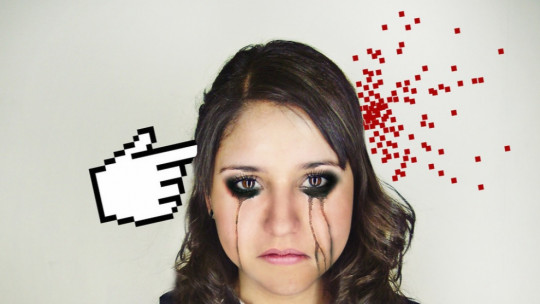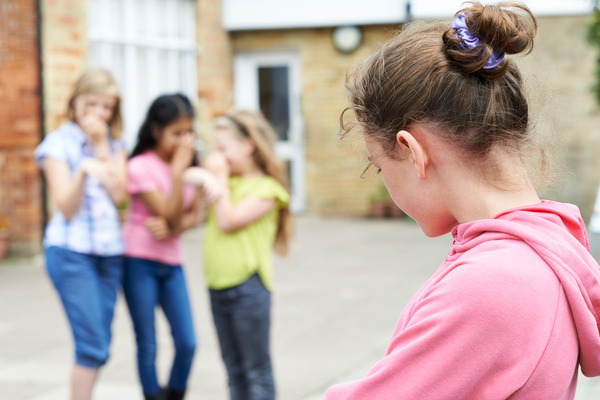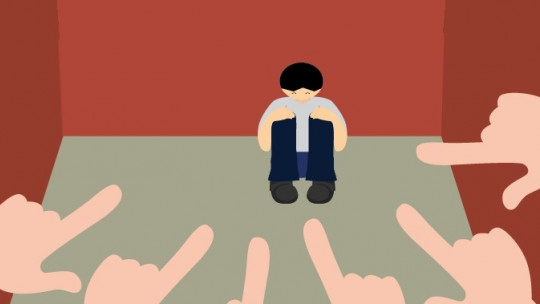How can we detect cyberbullying? What are the consequences of cyberbullying? Discover the different types of online harassment that exist and how to prevent these attacks.
There is a dark side among all the benefits that the internet has brought us. He cyberbullying , also known as cyberbullying, is a problem that affects a greater number of people every day, especially the youngest. Before, harassers had a place, it could be school or the streets, but now, online harassment reaches everywhere.
More and more the cyberbullying cases and not only in number but also in their severity. In fact, some research has concluded that cyberbullying can affect up to 60% of the adolescent population. People who are affected by cyberbullying can experience many psychological prejudices including suicidal behaviors. Therefore, it is important to detect it in time.
What is cyberbullying?
He cyberbullying or cyberbullying refers to the use of the internet to cause harm to other people. Normally this involves the use of media such as social networks to try to reach the victim and cause damage to their image.
It is considered that we are facing cyberbullying cases when this harassment occurs repeatedly and intentionally and when it includes two minors. Furthermore, these attacks usually occur through threats, verbal violence and public humiliation.
Types of cyberbullying
There are many types of cyberbullying currently. In fact, the more networks proliferate and the more influence they have, the more forms of violence appear through them. Currently we can identify the following:
- Flaming : Flaming refers to the use of offensive messages to try to capture a person’s attention and provoke a reaction that could harm them. In these cyberbullying cases the person attacked can appear as if he were not the victim in front of anonymous people.
- Outting : These types of cyberbullying They involve sharing a person’s private or embarrassing information over the internet and especially on social networks.
- Trolling : Another form of internet harassment involves the pursuit of trying to irritate and offend people in general. In this way, the cyberbullying person will say something derogatory and offensive to provoke a reaction from Internet users.
- Nicknames : In some cases, people perform cyberbullying without others being able to perceive it. In fact, only the bullies and the victim know. The use of nicknames consists of calling someone a specific way and starting to harass them without others realizing it.
- Harassment: In this case, the victim repeatedly receives messages that are offensive and/or aggressive. This differs from flaming and nicknames because in this case, the harassment occurs over a long period of time and the aggression is characterized by being more unilateral, that is, it includes one or more aggressors against a specific victim.
- Spreading false rumors or denigration: There have been many real cases of cyberbullying where harassers spread embarrassing and false rumors about a victim that harmed their name on the networks and in reality. This type of cyberbullying is one of the most frequent along with flaming and harassment.
- Cyberbullying : Sometimes bullies don’t just offend the victim. So much so that there are cases in which cyberbullying ends with very serious physical threatening words.
- Exclusion: This type of cyberbullying is characterized by repeatedly not allowing a person to participate in a specific social network.
- Impersonation: Impersonation occurs when the aggressor accesses the victim’s accounts to impersonate them and send aggressive messages to other people as if they had been the victim themselves.
- Happy slapping or happy slapping: Happy slapping is a term used to refer to the recording of physical abuse that occurs between colleagues and which is subsequently uploaded to social networks.
Consequences of cyberbullying
There are many harms of suffering from online harassment. In certain cases, cyberbullying can have more effects than ‘traditional harassment’ because the person who receives it cannot escape this situation since everything remains in the ‘cloud’ and the victim is no longer safe in the privacy of their home, but rather You receive continuous harassment and it is inevitable. According to research, people who see themselves as victims in a case of cyberbullying may experience the following consequences for their mental health.
- Feelings of distress due to harassment
- Increased feelings of depression and mood swings.
- Anxiety and panic attacks
- Trouble falling or staying asleep
- Suicidal ideation or suicide attempt
- Increased feelings of fear
- Feelings of low self-esteem
- Social isolation
- Poor academic performance
- Problems in relationships with family and friends
- Symptoms of post-traumatic stress
- Self-harm
- Substance abuse
- Increased feelings of anger, irritability, or angry outbursts
As we see the symptoms of cyberbullying They can be very harmful to a person and the consequences not only affect the victims, but also the aggressors and the people who witness it. Furthermore, bullying on the Internet usually occurs at a very young age, where the social influence is much greater. Therefore, if you detect that someone is suffering from cyberbullying, it is important to tell an adult or recommend consulting a professional psychologist.
How is bullying and cyberbullying different?
In the case of cyber bullying , the victim is often left with no escape from the abuse. The reason for this is that unlike ‘traditional’ bullying, online bullying can happen anywhere and in any situation. In fact, the evidence of these attacks remains over time in a material way and therefore, the victim feels constantly harassed.

How to prevent cyberbullying or help victims?
The best way to address the different types of cyberbullying It is through communication and showing trust from the adults around them. To do this, we recommend the following guidelines to follow:
- Listen and talk : show yourself calm and with an attitude of understanding and attention. It is normal for people who suffer from internet harassment feel ashamed of it, therefore it is important to try not to judge any of their actions and be all ears so that the victim feels confident.
- Strengthens your self-esteem and don’t blame him – Emphasize that he is not alone, that you are there to help him resolve the situation. Strengthens your courage for asking for help. It is very difficult for anyone to assume that he is being harassed and ask for help in the cyberbullying cases
- Act immediately: Don’t wait for the bullying to stop on its own because the problem could get worse. The key is to talk to the harassers and try to solve it in the most mature way possible.
- Communicate the situation to the school: usually the cyberbullying It is not only limited to the virtual world. In fact, victims usually receive these attacks twice: both at school and at home via the Internet.
- Advise him on how to act :
- Keep sensitive information private
- Help you stop cyberbullying
- If you feel threatened it is time to seek help
- Encourage you to make friends
- Block the harasser and report abusive content
- Save the tests
- Foster empathy
- Seek help from experts: as most of us have cyberbullying cases They usually end up with many psychological consequences for the victim. Therefore, if your child has received this type of abuse, it is important to consult with a health professional (there are also psychology consultations in social security).
- Make sure the child feels comfortable asking for your help: Never shame him for accusations or actions he has done. Be understanding and try to be as respectful as possible of the situation.
Cyberbullying goes far beyond traditional harassment. In many cyberbullying cases Things get out of hand, since teenagers think that anything goes on the Internet. Do not allow anyone to humiliate you or attack you in this way and act to put an end to it.










